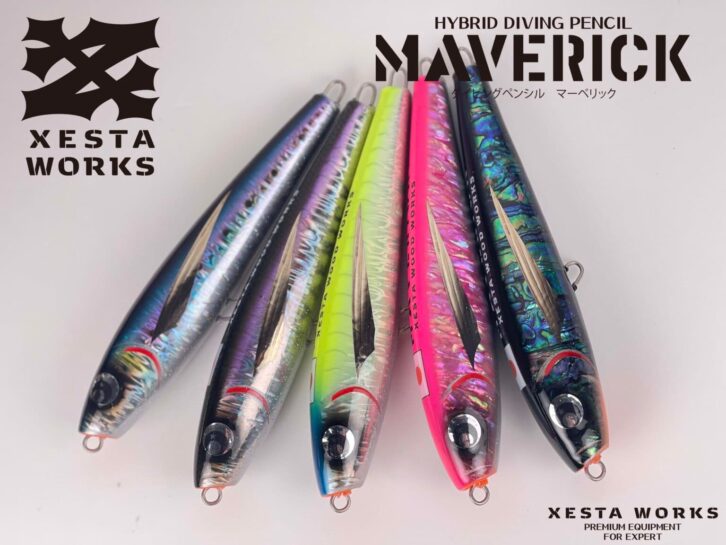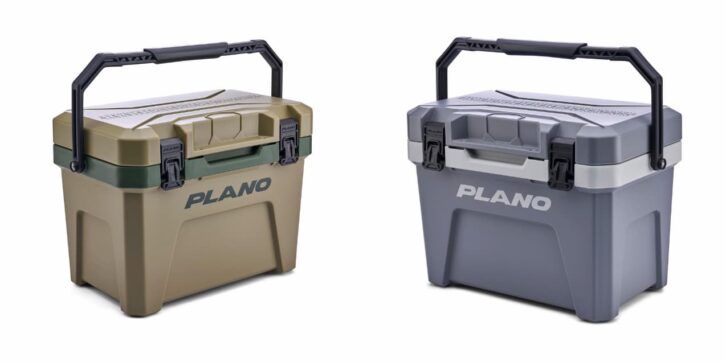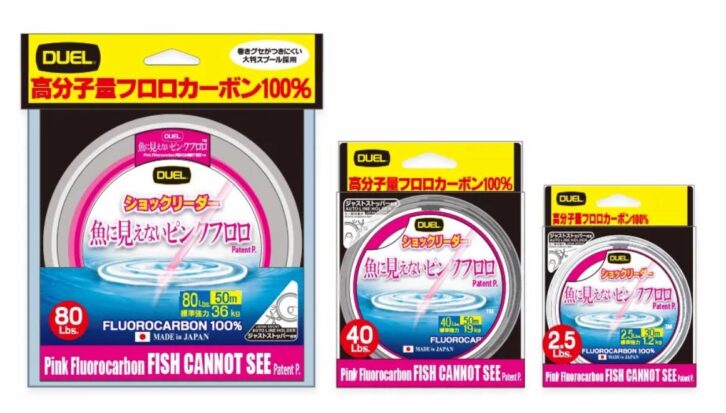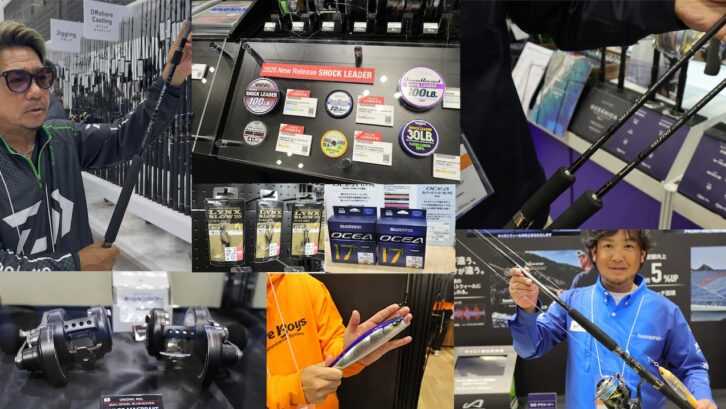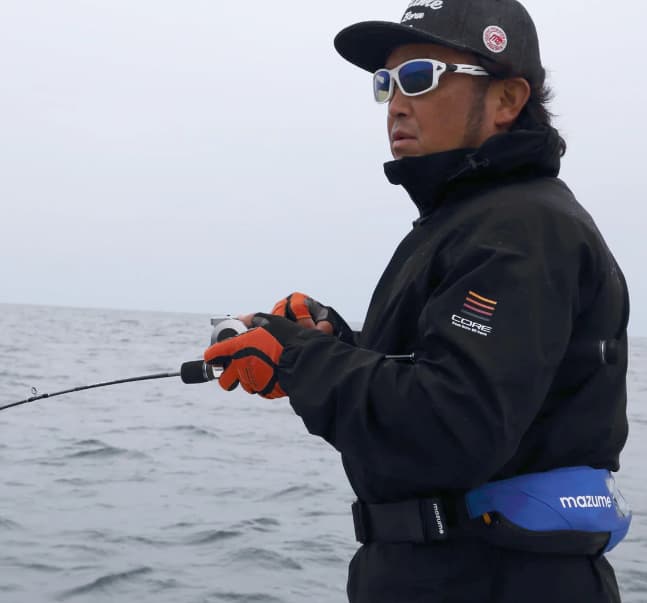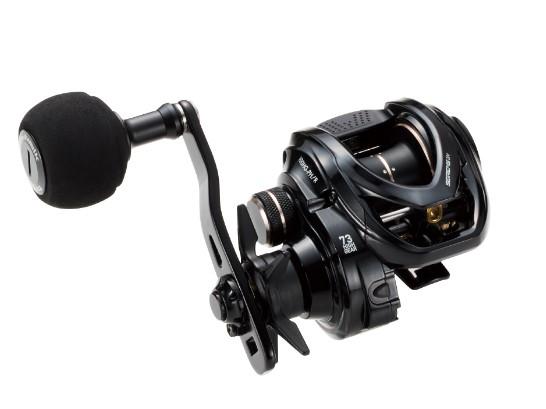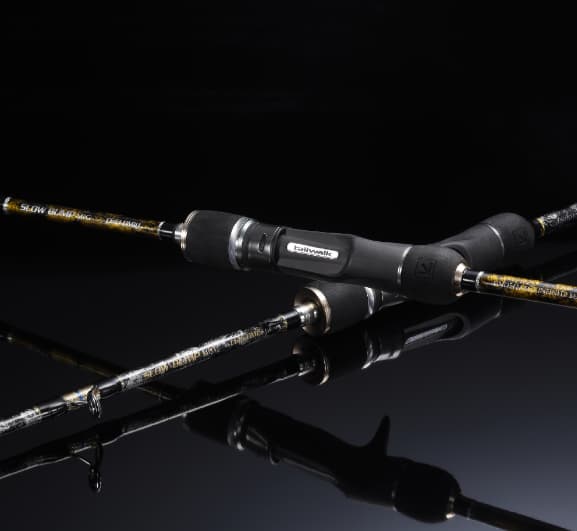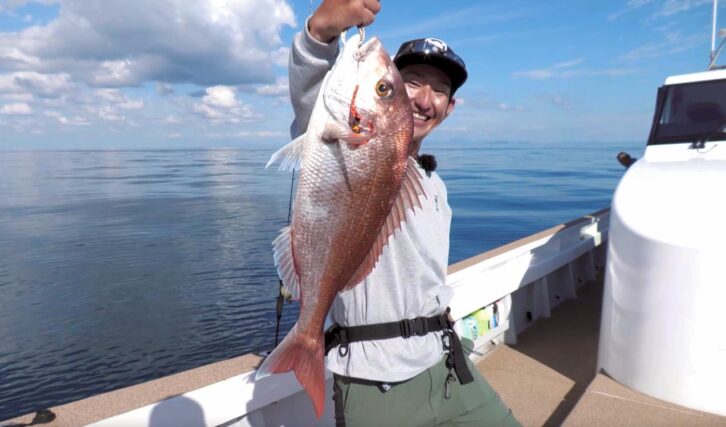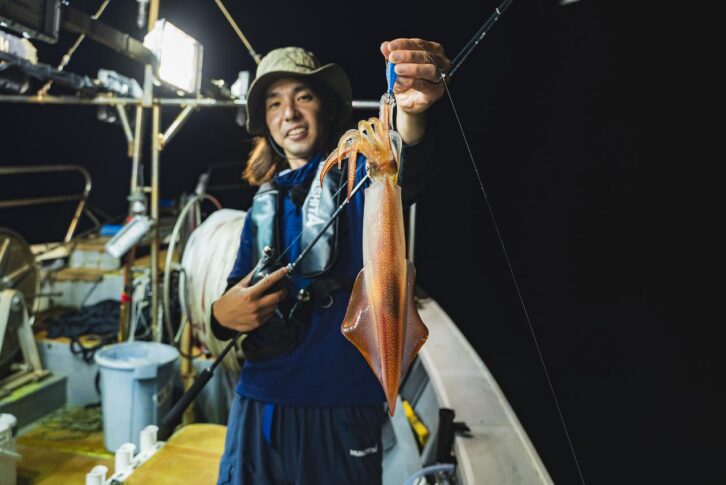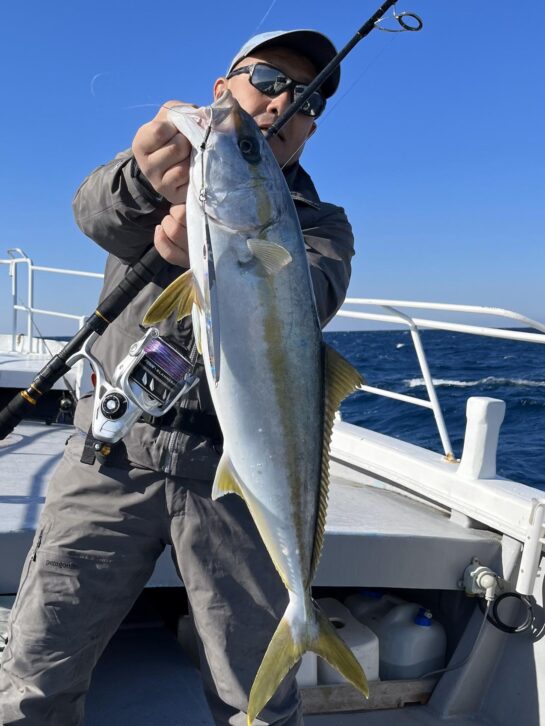Jig S GLIDE's Fast Movement and Stop and Fall Strategy
Yellowtail-class fish are hitting in succession with the arrival of the bluefish season! Jigging for Bluefish off Toba, Ise Bay
As we begin to feel the signs of autumn, the fields for yellowtail class bluefish in various regions begin to come alive. Anglers targeting bluefish also begin to move to Ise Bay and the waters off Toba, which are popular among anglers in the Chubu and Kinki regions. Members of Crazy Ocean and Happison Girl YouTubers gathered at such fields for the filming of Fishing Lover Tokai. They fully enjoyed the yellowtail jigging.

INDEX
Capturing yellowtail with light tackle
Off the coast of Toba, Ise Bay, known for catching a variety of fish. In autumn, fishing for bluefish, including yellowtail size, becomes good, attracting many anglers to each port. The members who gathered to fish for bluefish this time were Naokazu Naka, a product development manager of Crazy Ocean, Toshiyuki Tsui, a field tester of Crazy Ocean who mainly works in Fukui Prefecture, and Suzu Kawagoe, a Happison Girl who usually focuses on bass fishing but enjoys various types of fishing, Another Happison Girl, Chihwa Minase, and Makimaki Mackie, a You Tuber who distributes fishing videos, were also present. They gathered for a photo shoot for Fishing Rubber Tokai.
Before setting out from the boat, the offshore conditions were expected to be muddy due to the post-typhoon conditions, but would they be able to catch any good fish? The members boarded the Fishery Seiren Maru in Toba early in the morning at 5:00 a.m. and set sail in search of yellowtail size fish. The response seemed to come from shallow water, starting at a depth of about 30 meters. Although the target was yellowtail size, the tackle used was all light. Because of the light tackle, a wide range of anglers can try their hand at fishing. This is one of the charms of jigging for bluefish off the coast of Toba in Ise Bay.

Jigging for bluefish off the coast of Toba in Ise Bay, where a variety of lure fishing is popular, from light to big game. Among these, jigging for bluefish, mainly yellowtail, is the easiest challenge and has the highest hit rate of good-sized fish.
Tackle used is specially designed for blue-fish jigging
Jigs with a wide variety of movements
The rod I use is Crazy Ocean’s OCEAN TORQUE YT OT-B61ML, a bait rod for jigging for bluefish. This model was designed and developed based on the concept of “bending to catch”, with a thick and slim torque blank to realize the rod tension necessary for jig operation and to soften the burden on anglers and lines. The blank with tenacity and strength enables stable communication and reduces angler’s burden. This makes it easy to use for beginners and women who are not strong enough to use it, and it also provides satisfactory performance for those who are used to jigging for blue-fish.

Mr. Naka, who is in charge of product development at Crazy Ocean, explained the tackle while we fished. He introduced rods, jigs, and hooks best suited for jigging for bluefish in Toba.
OCEAN TORQUE YT introduction article
https://anglers-time.com/808/
Manufacturer’s site
Ocean Torque YT | Crazy Ocean (crazy-ocean.com)
Reel is selected high gear model, PE 1.5 for main line and leader is fluorocarbon type #6-8. The main jig is Crazy Ocean’s S GLIDE 150 g. The S GLIDE creates a panic action with a high pitch short action and a strong flashing appeal on the fall. The S GLIDE is a model that creates a gliding fall action and continues to appeal both on the up and down sides of the lure.

Manufacturer’s website
S-GLIDE | Crazy Ocean (crazy-ocean.com)
And this time, the S GLIDE is fitted with Crazy Ocean’s assist hook Small Jig Power Assist L size on the top and bottom of the jig. Mr. Naka explained that this hook has a thicker hook shaft for the size of the baited hook, so it can handle unexpected hits from large bluefish. It is a reliable hook when yellowtail class fish are in the mix.
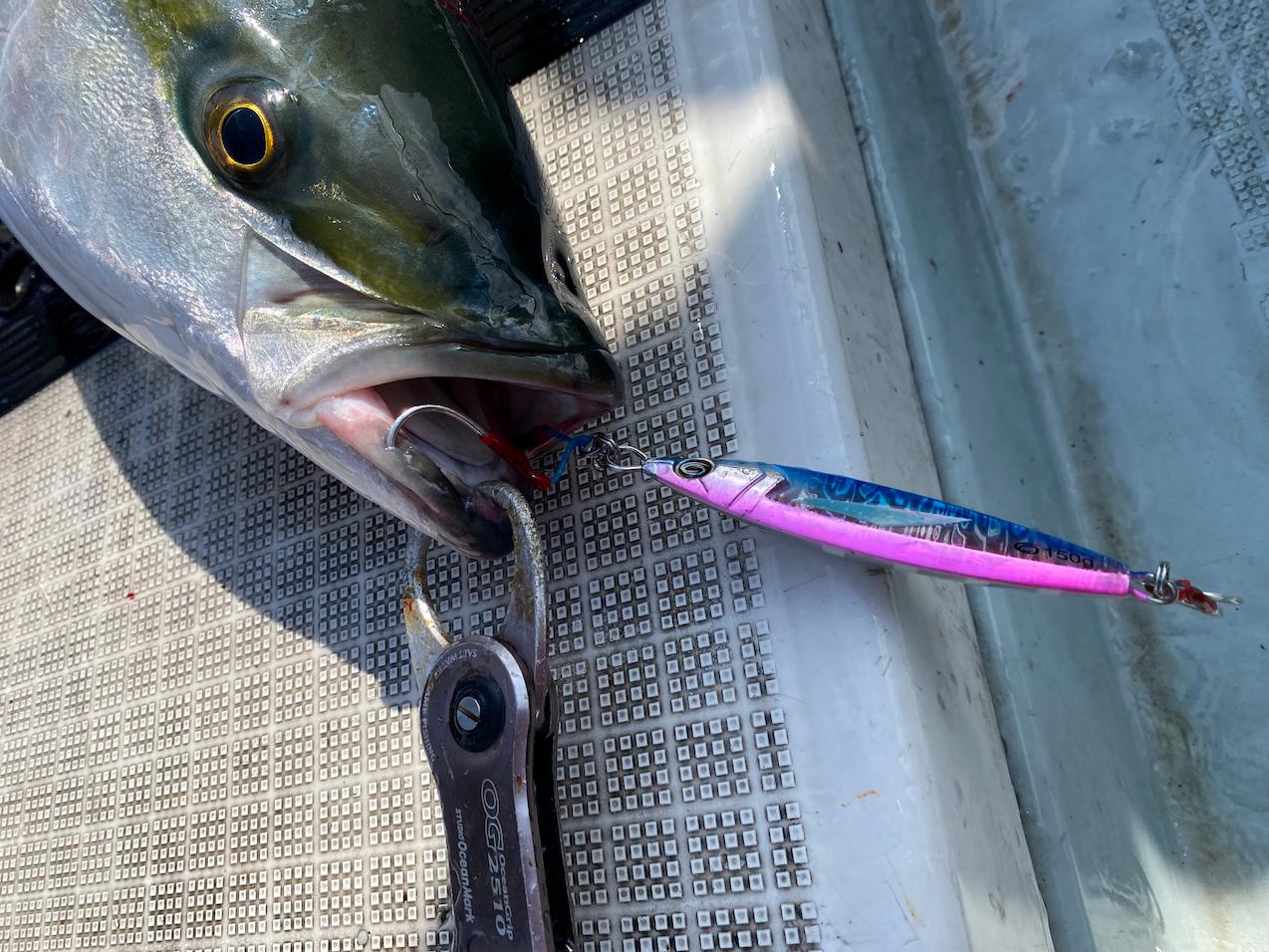
Crazy Ocean’s Small Jig Power Assist L-size assist hook hooked the fish well. Although it is a relatively small hook, it is powerful enough to be used for jigging for bluefish!
Small Jig Power Assist | Crazy Ocean (crazy-ocean.com)
The basic action is fast reeling & plus α
Now, I asked Mr. Naka about the basic method of fishing off the coast of Toba. First of all, the basic method of searching with the S GLIDE is to attract fish to the jig by fast reeling after the jig is on the bottom, and after reeling to a certain point, let the jig fly with rod action or make the fish use mouth movements such as stopping and falling. When the fish are active, this is a good pattern to follow. Also, in situations where there is a reaction in the middle layer, but the fish are not using their mouths, the angler can attack by slowing down, jerking and stopping, and jerking and falling to make the fish appear more solid. These are the two main strategies, and depending on the situation, I adjust the speed, jerk width, and time of fall to find a pattern.
This time, we did not get any bites for a while after we started fishing. The morning tide was probably at a standstill. After a while, Tsui’s jig got a bite at a depth of 12 meters. This bite did not lead to hooking, but it was soon followed by another hit. The fish that came up was a bluefish, just as he had hoped. It was the size of a walassa. The jig he used was an OCEAN FLASH TG 100g blade tune. I just reeled it in and brought it in for the hit. The captain told us that Spanish mackerel were migrating to the area, so we were just reeling in the fish when it bit the hook. A staff member of the Fishery Season Maru got another hit at the back of the boat. These two fish quickly raised the spirits of the anglers on board the boat. However, the next hits did not follow.
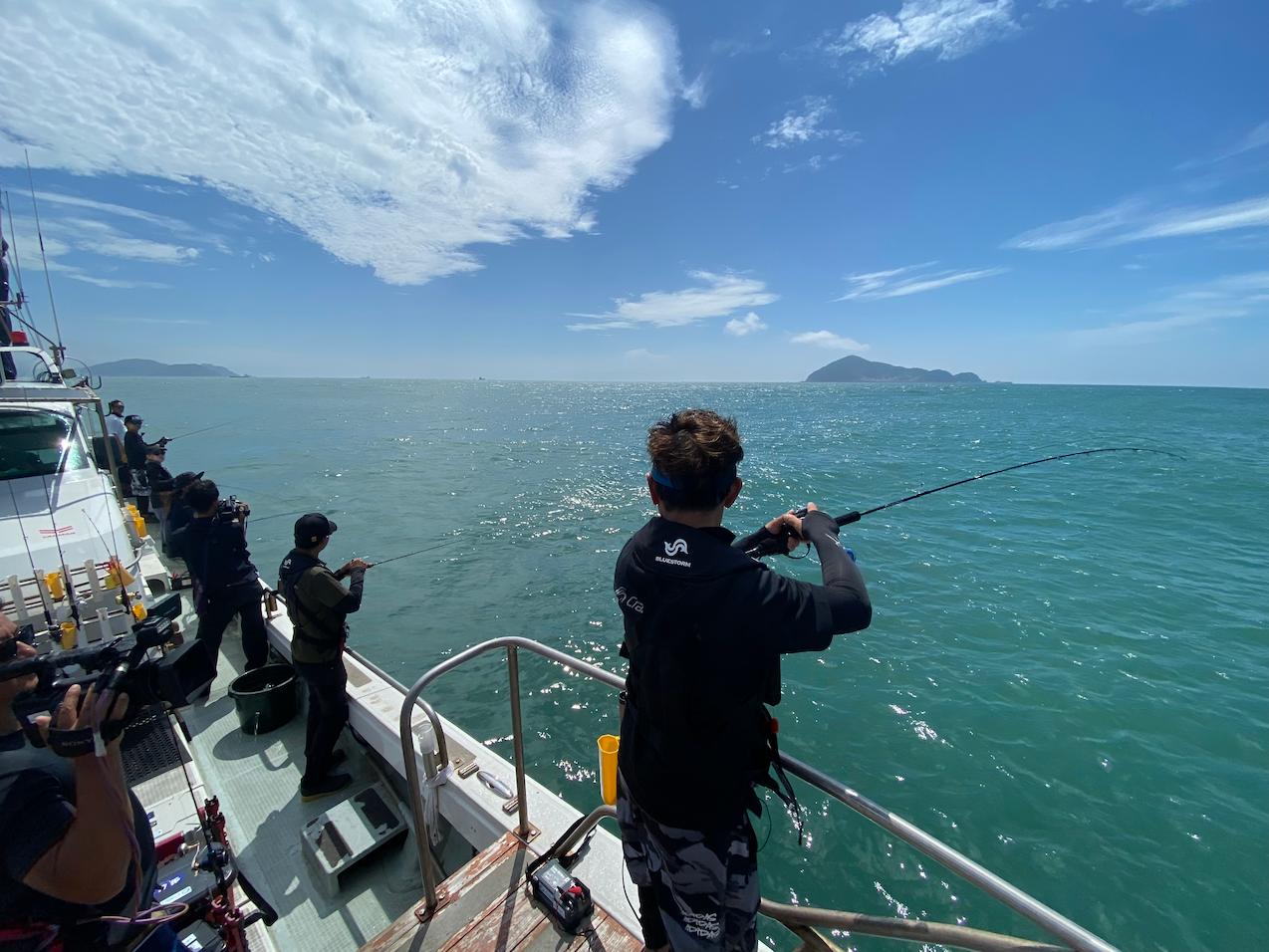
For a while after we started fishing, there were no bites. It seemed that the tide was out and the water was muddy.
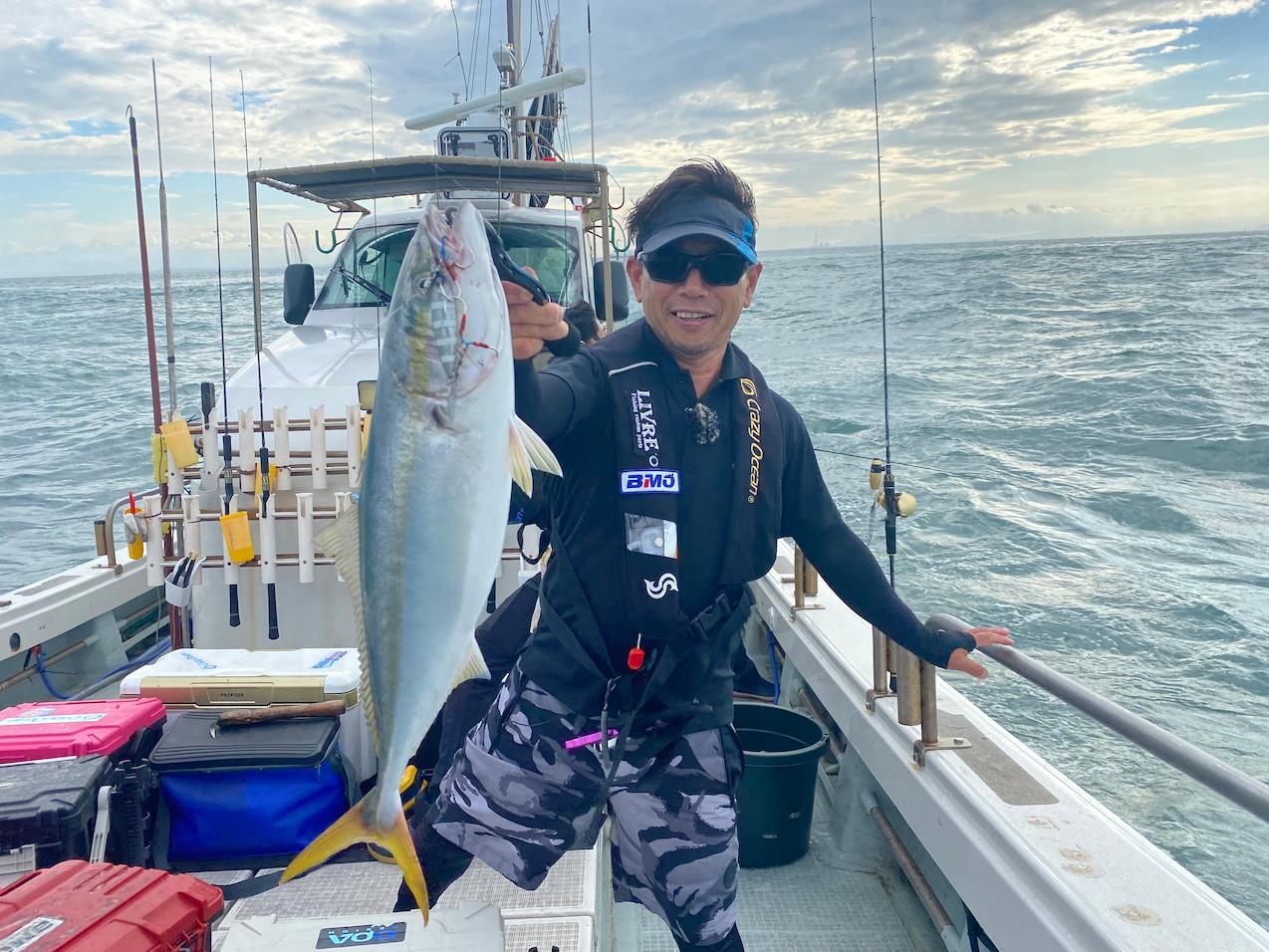
The first hit was by Mr. Tsui. First, he caught it with OCEAN FLASH TG100g blade tune.
How to entice with electric jigging
Mr. Tsui got his first fish on this fishing trip, and it was caught with the newly released OCEAN TORQUE YT DJ, a rod for electric jigging. We asked him about how to lure fish when electric jigging and about his rod.
First, how to lure fish. Mr. Tsui said that he sets the reel speed to 24 when the jig hits the bottom. He reels the reel 1.3 to 1.5 meters per stroke. The action is simply to move the rod in a one-pitch jerk while continuing to reel in the reel with the electric reel. This winding speed and movement cannot be reproduced with a hand-wound reel, and sometimes only electric jigging can produce the best results.
The OCEAN TORQUE YT DJ rod is specially designed for electric jigging for bluefish. Unlike conventional OCEAN TORQUE YT rods, the OCEAN TORQUE YT DJ is designed to be a little stiffer so that it can be properly cranked even at the high speeds of electric jigging. In addition, the foregrip is designed to be longer so that the angler can easily insert the crank when the electric reel is set on the spiral guide, and the rod is designed to be supported by the hand that is not perming the reel.
Electric jigging has the advantage of supporting the angler electrically as well as being able to entice the angler in a way that manual jigging cannot. For this reason, the two Happison girls later tried electric jigging in between hand-wound jigging. By doing both, they felt less fatigued and were able to enjoy the sea of Toba more.
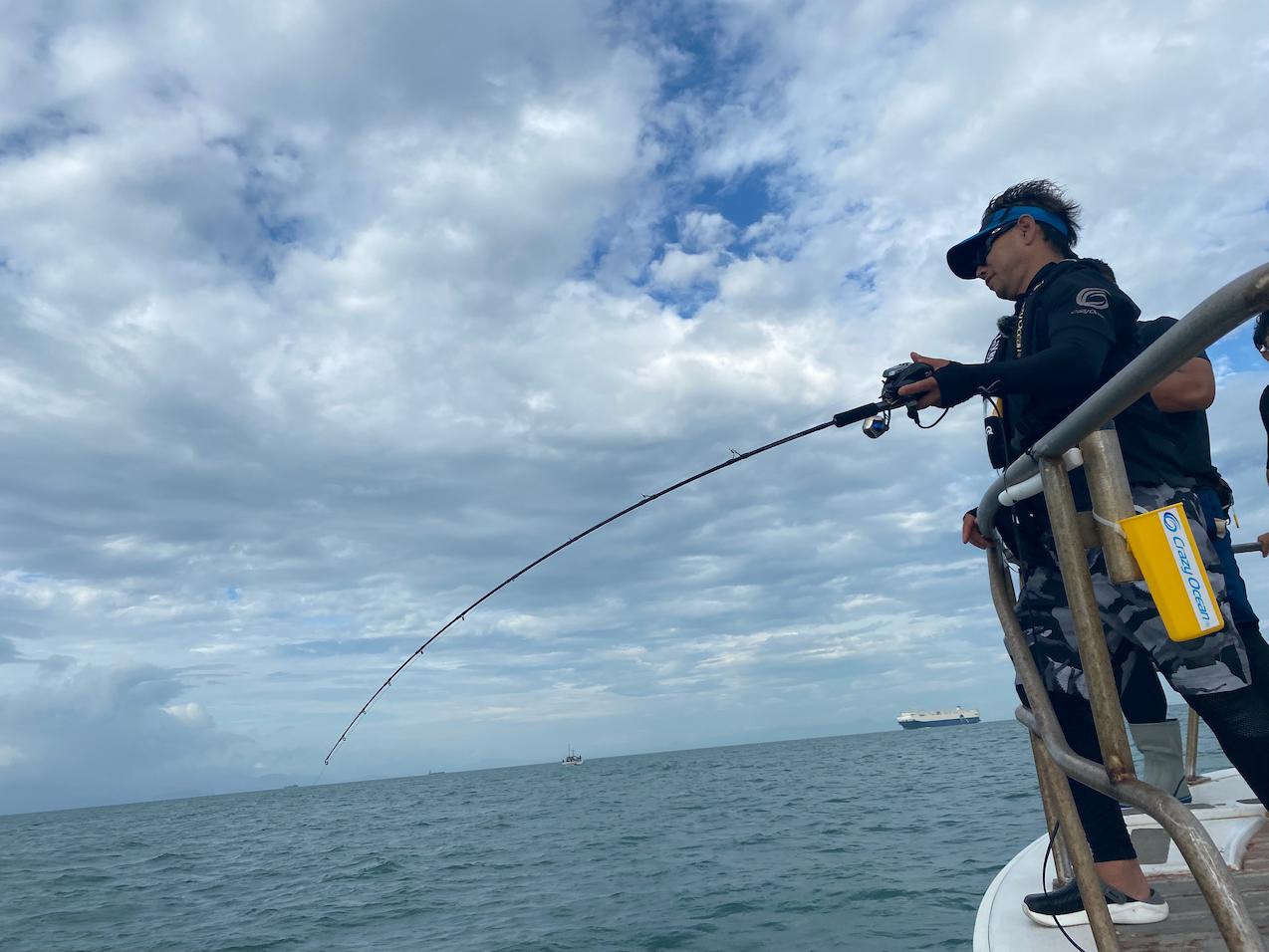
On this day, in addition to jigging with manual reeling, we also explored electric jigging. Doing both reduces fatigue. The rod used was the specialized rod OCEAN TORQUE YT DJ.
A series of yellowtails hit at the right time!
Let’s go back to the day’s fishing. After a while of no hits, the long-awaited hit came to Mr. Chihwa Minase, who kept on shuffling the jig between the body of the fish. The fish hit near the bottom and showed a good pull, but after a careful exchange with the fish, it appeared on the surface of the water. The fish came up to the surface and was an 85 cm yellowtail. The jig was a S GLIDE 150g bull pin. After landing on the bottom, he reeled it in fast, and when it fell, it hit the water. For Mr. Chiwa, it was the first time to catch a yellowtail class fish. He was rewarded for his persistent efforts.

In the second half, Mr. McKee got a long-awaited hit. It was an 81cm yellowtail. After landing on the bottom, he reeled in fast, and then sent the jig flying with a long jerk, and that’s when he got the hit. Later, Mr. Tsui’s electric jigging also got a hit. As the tide became faster, he switched to a S GLIDE 210g and brought in the hit. The color was Zebra Red Kin. After this fish, it seemed as if the time had finally arrived, and the boat was starting to hear the sound of hits all over the place. As Mr. Naka said, fast reeling, jerking, and falls gave good results. In the latter half of the day, all the fish were caught on the S GLIDE 210. We were able to enjoy jigging in Ise Bay with a series of yellowtail and walleye.
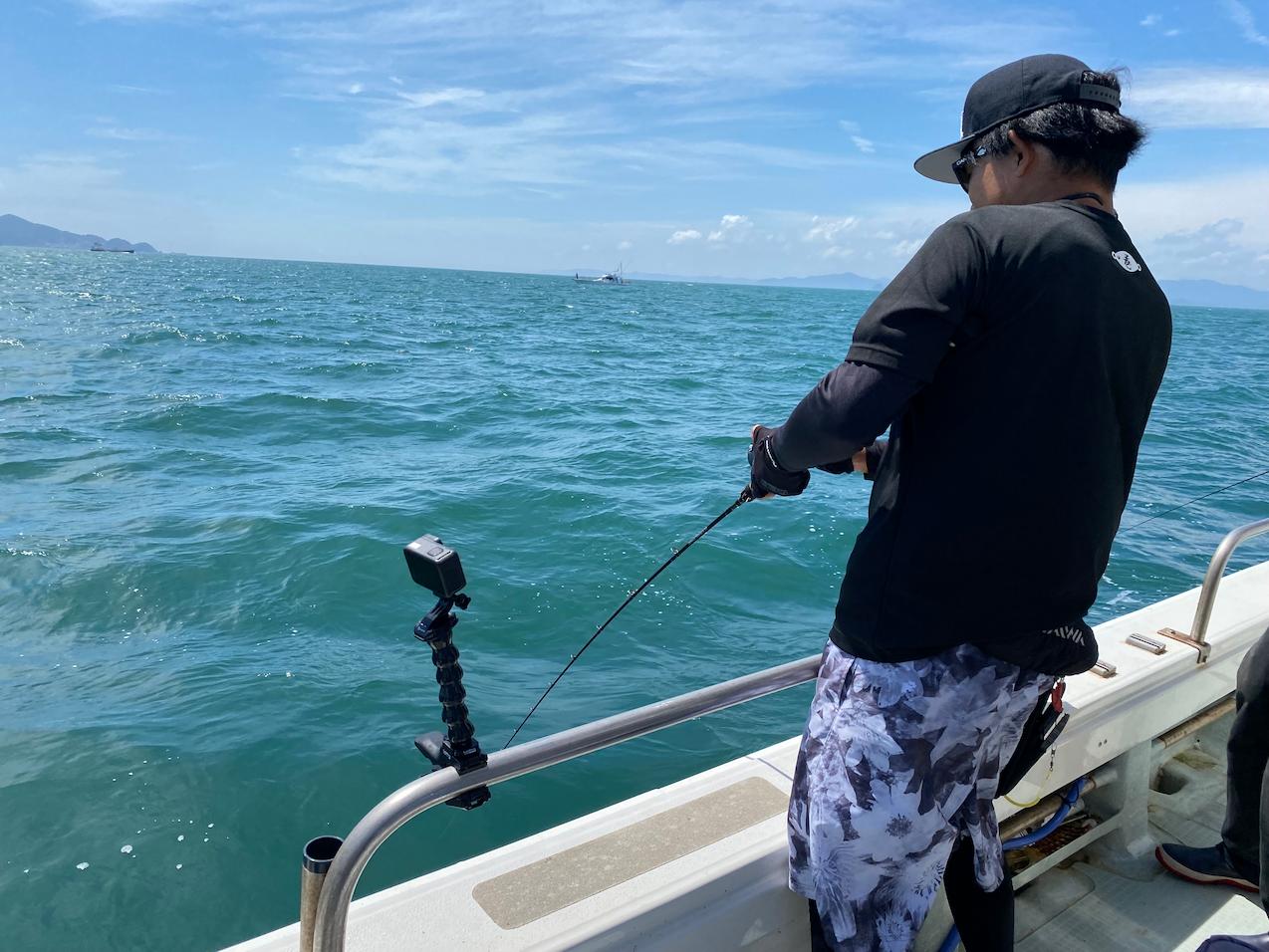
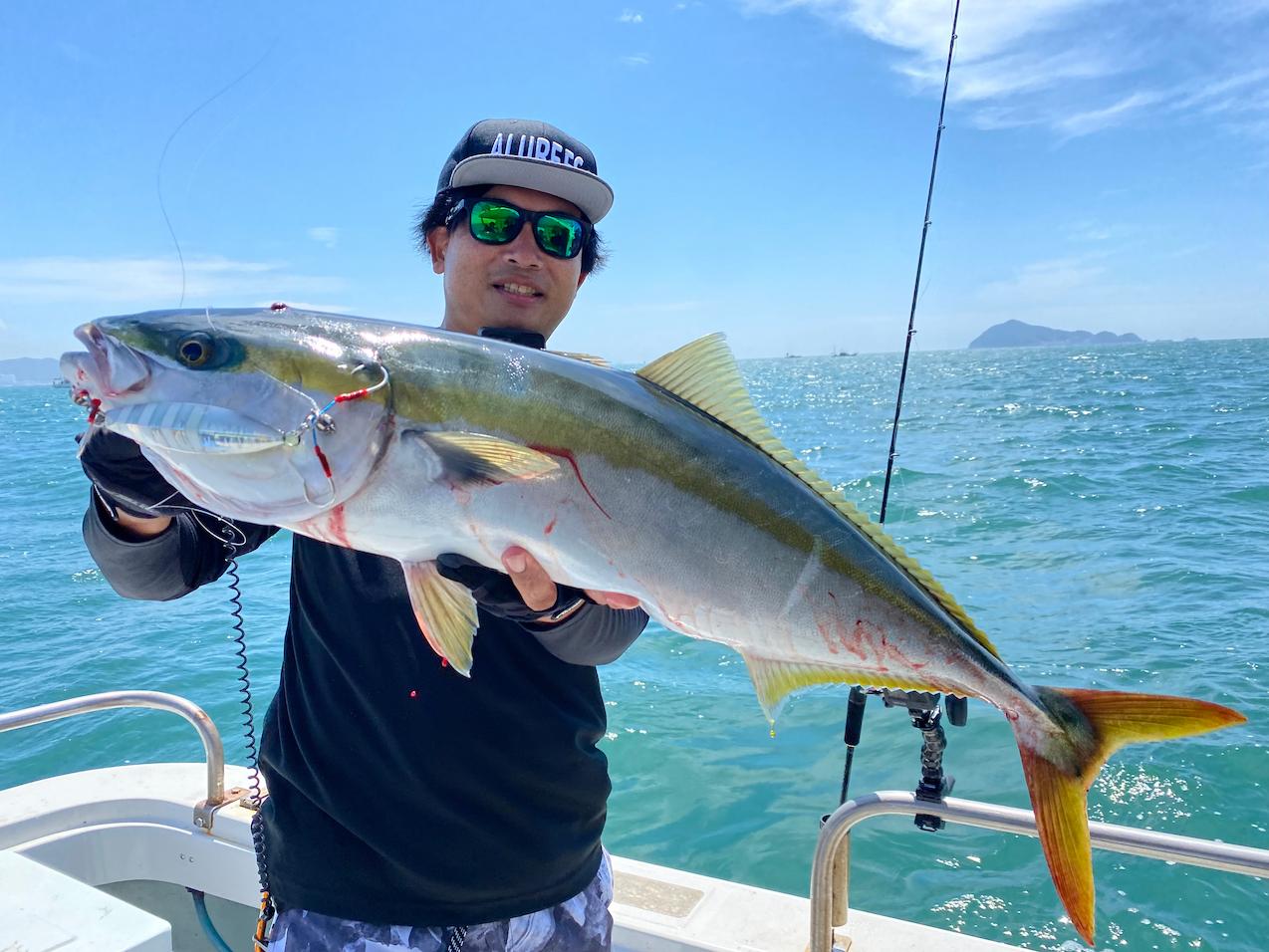
Mr. Mackie caught an 81cm yellowtail. After landing on the bottom, he reeled in fast and jerked long to make the yellowtail use its mouth.

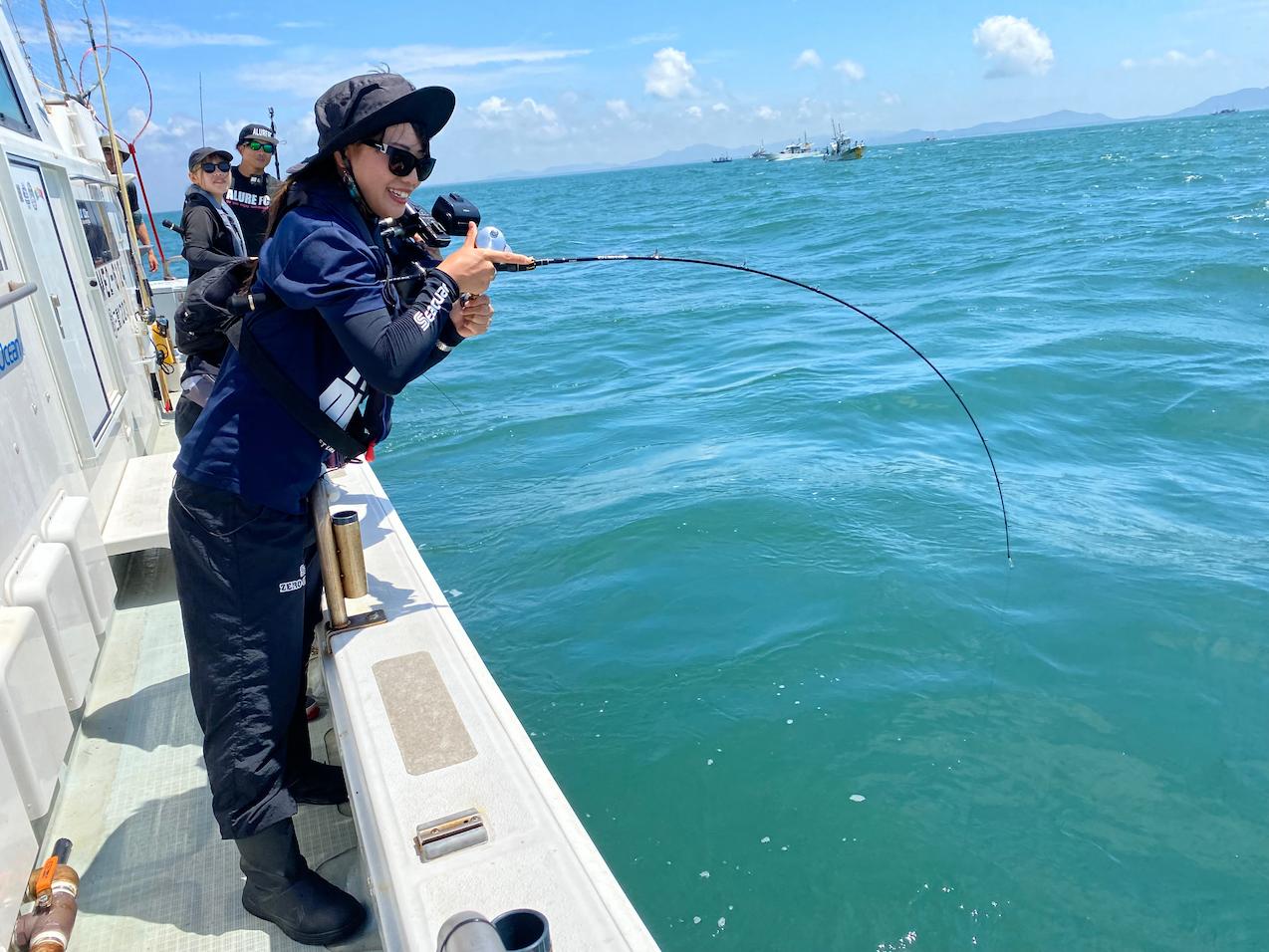
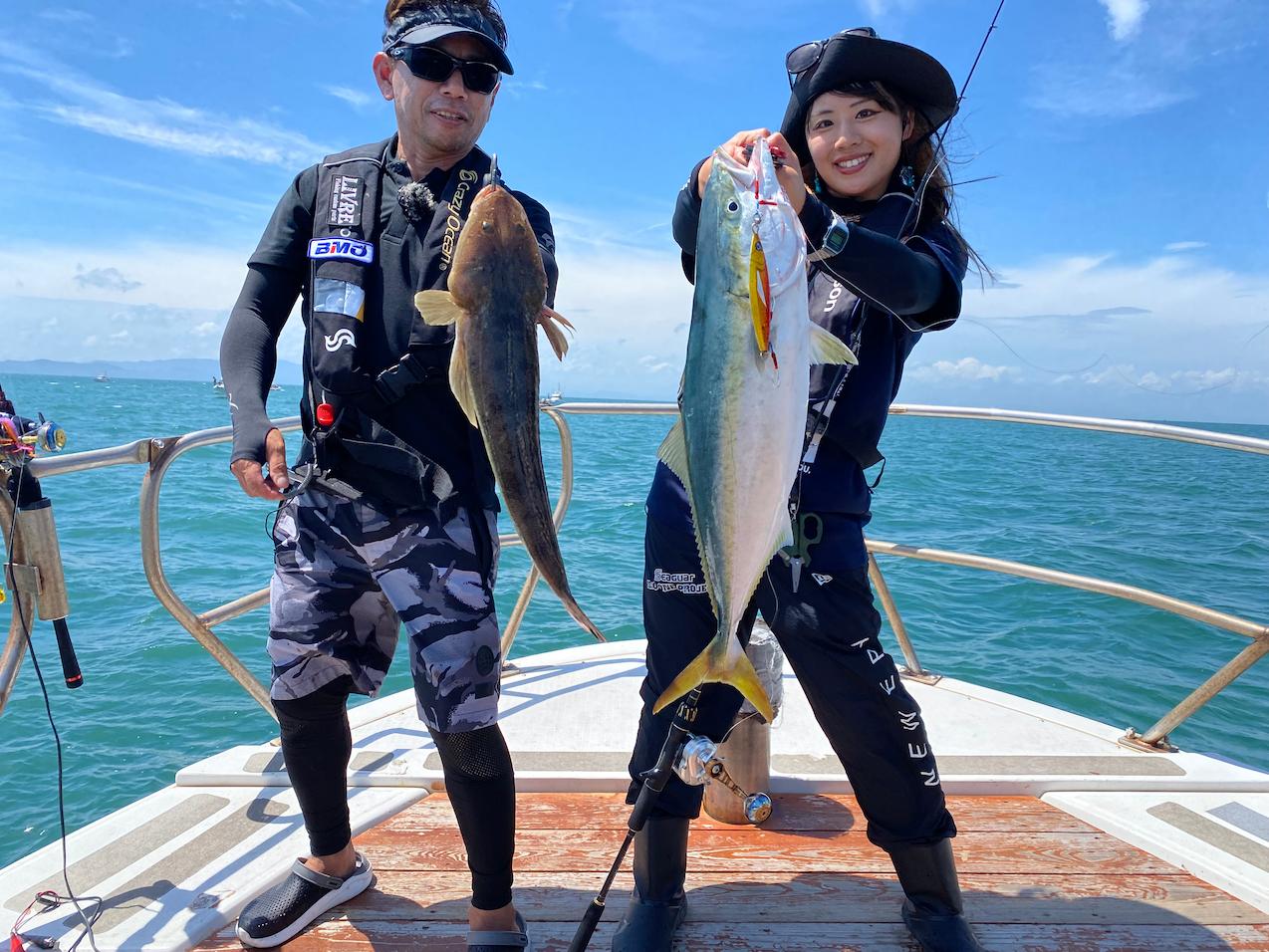
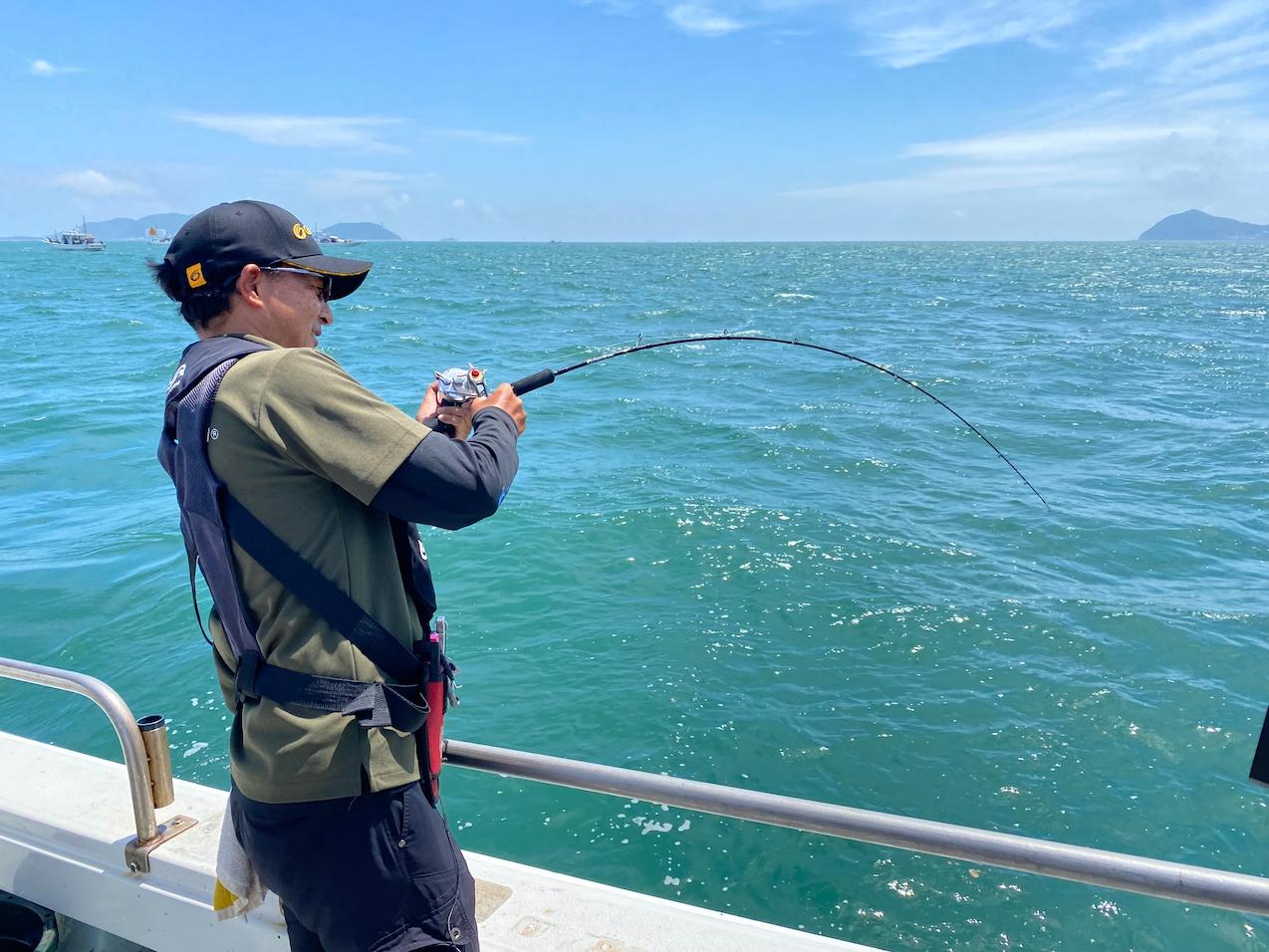


In the latter half of the day, we had a good time, and good-sized yellowtails started to appear one after another. Many yellowtail size fish also hit. By the way, because this is a sandy point, magochi also hit near the bottom.
The waters off Ise Bay and Toba, where we challenged this time, are rich in bluefish. It is not unusual to catch quite a few yellowtails and wrasses if the timing is right. In the coming season, Spanish mackerel will also be caught in abundance. Both are attractive targets. Why not give them a try by referring to the tackle in this article? By the way, the contents of this article are available at the following address. Please check it out as well.
Fishing Lover Tokai (TV Aichi *Please click here to enter the video)
Targeting Bluefish by Jigging in Ise Bay! 〜Ise Bay, Mie Prefecture – Locipo Free TV Movie and Video Streaming Service
Fishing Lover article of the day’s events
Jigging for Bluefish in Ise Bay! ~Toba, Mie Prefecture – Fishing Lover Tokai (fishinglover-tokai.com)
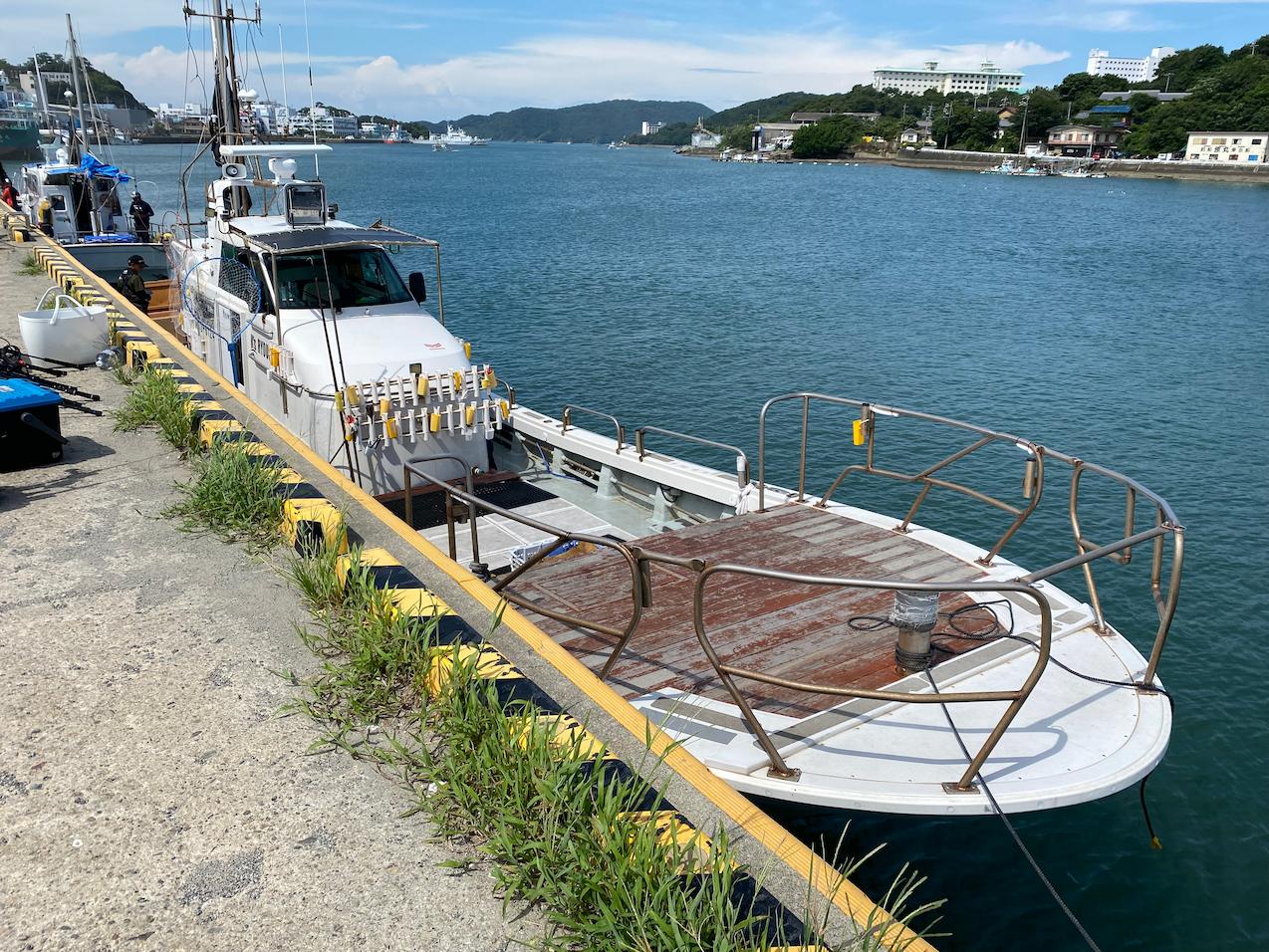
Fishing boat
RYOUSEIMARU Captain Kengo Kodera
https://ksryousei.com/



